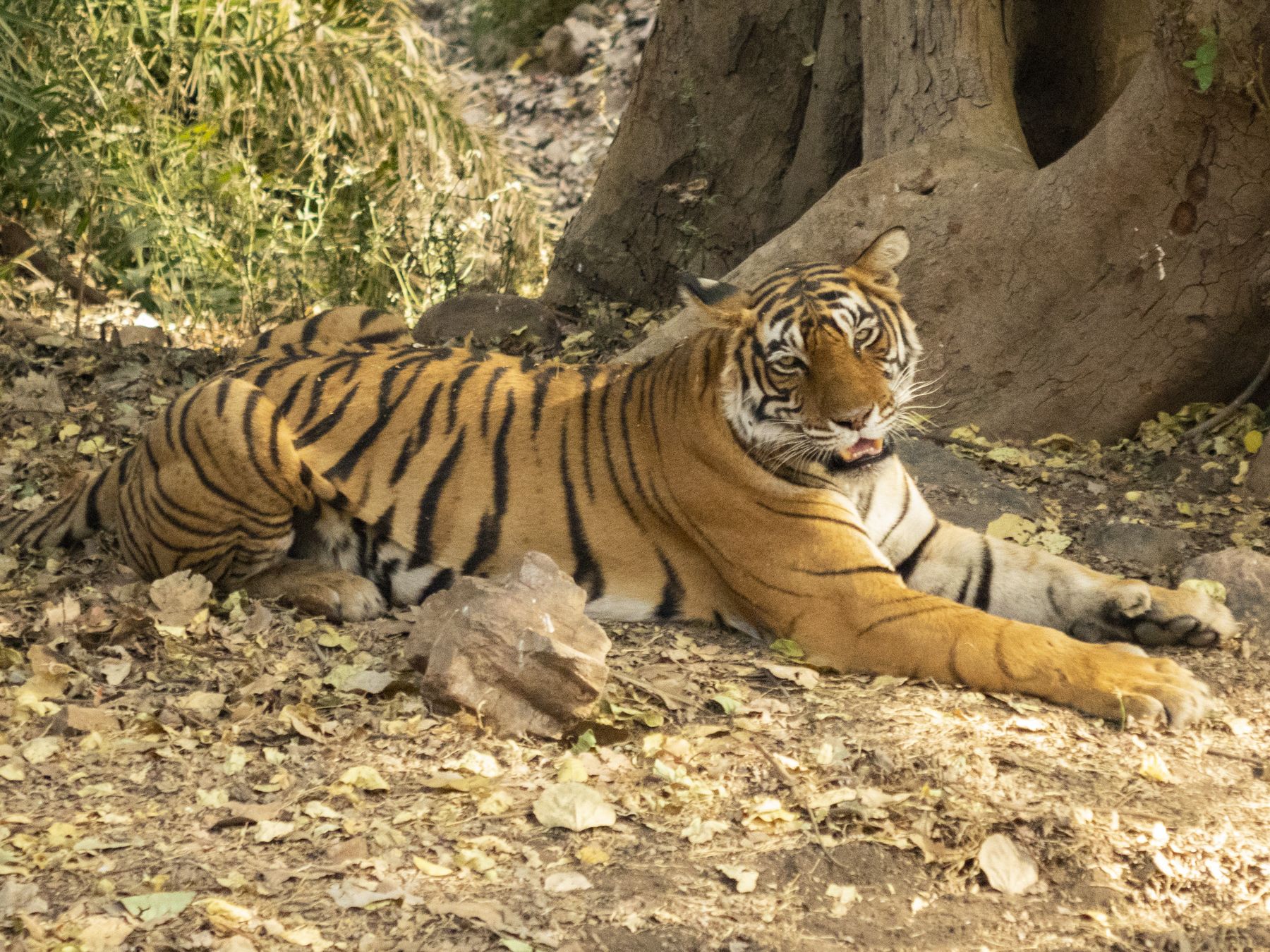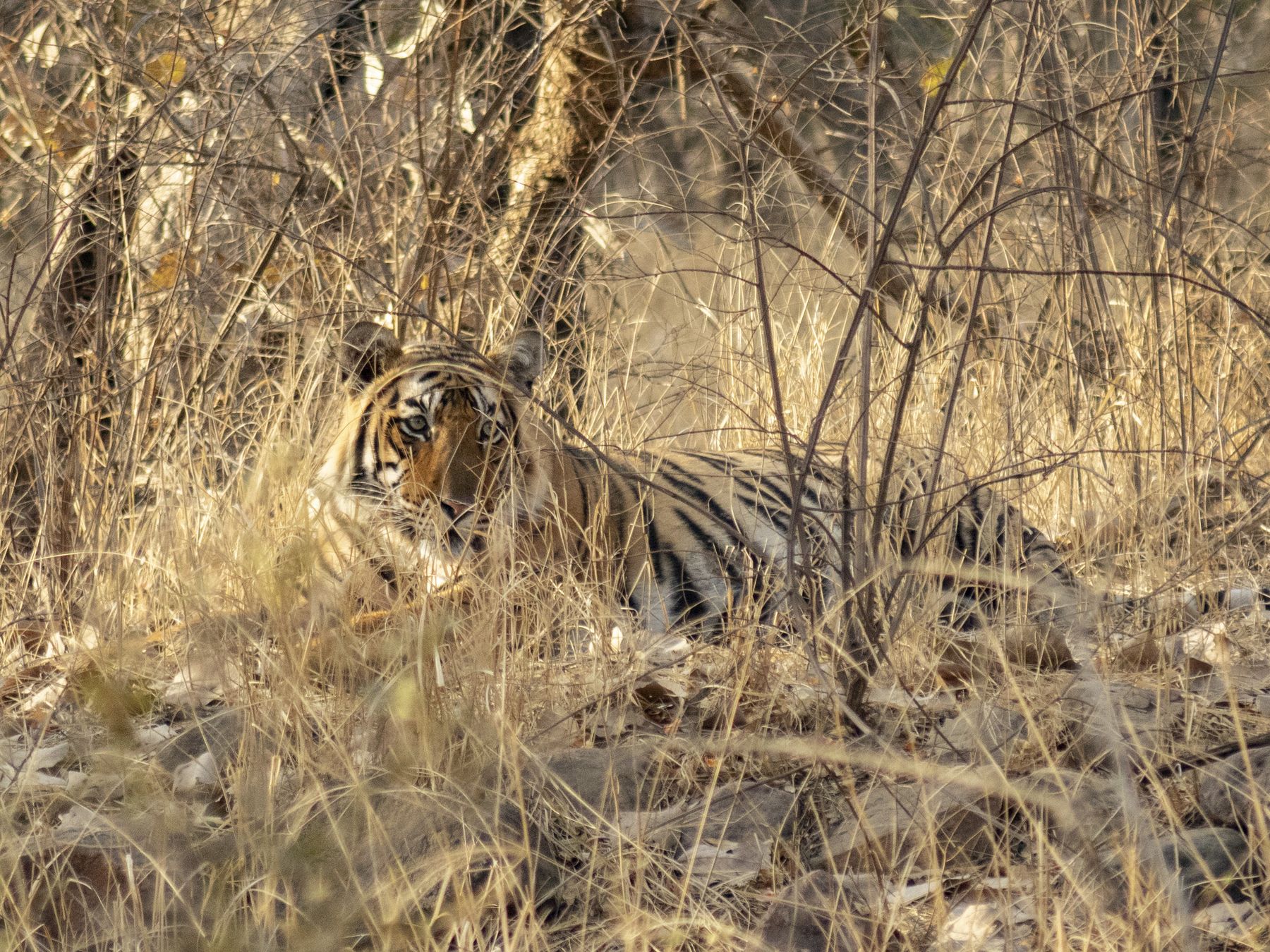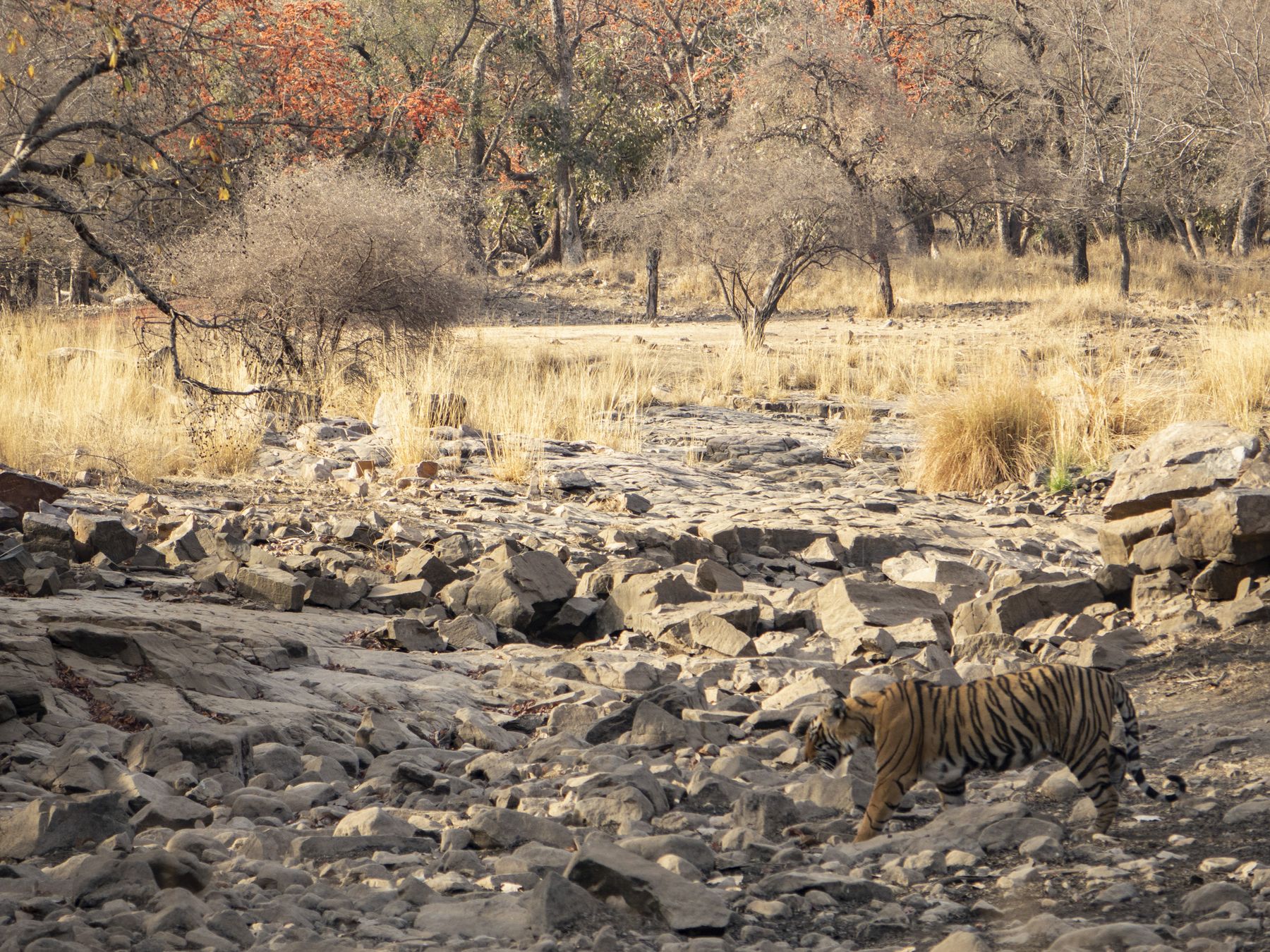Where to see tigers in India
by Suzie
Image gallery
India is one of the world’s best places to see the Bengal tiger, along with other extraordinary wildlife, much of which is protected within large national parks. Our India Specialists talk about where to search for these magnificent beasts, along with how to avoid the crowds and increase your chances of seeing other interesting species.
Tadoba
Located in Marahashtra state, Tadoba is the ‘new’ place to spot tigers in India, and is still pretty much off the radar for standard tourists. The park has a high density of tiger, many of which are breeding, so you have a higher-than-usual chance of spotting cubs. Tadoba is also good for bird-watching, especially birds of prey. Alongside the tigers, resident species include bison, leopard, sloth bear, wild dogs, deer and crocodile. You won't encounter many other vehicles - partly because the place is off the tourist trail, but also because accommodation is limited, and only 9 visitor permits are issued per session - that's to say, 9 jeeps in the morning, and 9 in the evening. There are no fences around the perimeter, and the buffer areas around the park are also excellent for animal spotting.
Satpura
Although it does contain a tiger reserve, Satpura isn’t the best place for spotting tigers, so if it’s your first time to India we’d probably make sure you went somewhere else (either instead or as well). Nevertheless, the unique highland scenery of this Madhya Pradesh reserve makes it worth attention, not to mention the rich biodiversity within its resident species, which range from leopards and sloth bears to porcupines, and the rather charming Indian giant squirrel! You can explore the park by jeep or boat, and you won’t be sharing it with many other people.
Ranthambore
Probably one of India’s best known national parks, Ranthambore is also one of the busiest. The former royal hunting ground is one of the country’s largest reserves, and an official Project Tiger sanctuary - Bengal tigers can be easily spotted here, along with leopard, hyena, langur and macaque. Located in Rajasthan, it’s not too far from Jaipur, and there are many hotels nearby, both of which add to the Park’s popularity; be prepared to share any photo opportunities with other visitors, some of whom will be exploring the park in minibuses.
Kanha
Deep in the state of Madhya Pradesh, Kanha's watering holes attract not only tigers, but leopards, wild dogs, wild pigs, and a rare swamp deer called a barasingha. The park is one of India's oldest wildlife sanctuaries, and much is made of its effect on Rudyard Kipling, whose Jungle Book was inspired by the forests of Madhya Pradesh - with a little artistic license, presumably. In fact, Kanha is not all jungle; broad grassland offers grazing and hunting for the park's residents, and a decent chance to see wildlife in the open for you.
Pench
Also in Madhya Pradesh, Pench makes a good partner to Kanha, and its tiger reserve protects a number of breeding tigers. Its riverine landscape is picturesque, and the park is home to leopards, jungle cats, hyenas, jackals, wolves, langur, porcupines, and - especially for those Kipling fans - two distinct species of mongoose.
Corbett
India’s oldest national park is very beautiful, but offers limited chances of spotting tigers compared to the other reserves. Nonetheless, two rivers flow into the park, making it a good habitat for aquatic species, including many birds. Situated in Uttarakhand in norther India, the park is largely forested, and its relatively temperate climate offers an alternative to the more tropical experience you'll have in the country's more southern parks.
Bandhavgarh
Along with its high density of tigers, Bandhavgarh also has a breeding leopard population, and is known for its rich birdlife. It's situated in Madhya Pradesh, and for a comprehensive wildlife experience it ties in nicely with the other national parks in that state. The park also protects leopards, and cranes breed here during rainy season.
When to go
February and March are the best months for tiger-spotting; this is dry season, when animals are drawn to watering holes, and the forest foliage is less dense. We recommend putting more than one park in your itinerary, to maximise your chances of seeing a tiger, and ensuring a diverse wildlife experience.
by Suzie on 12th April 2019



